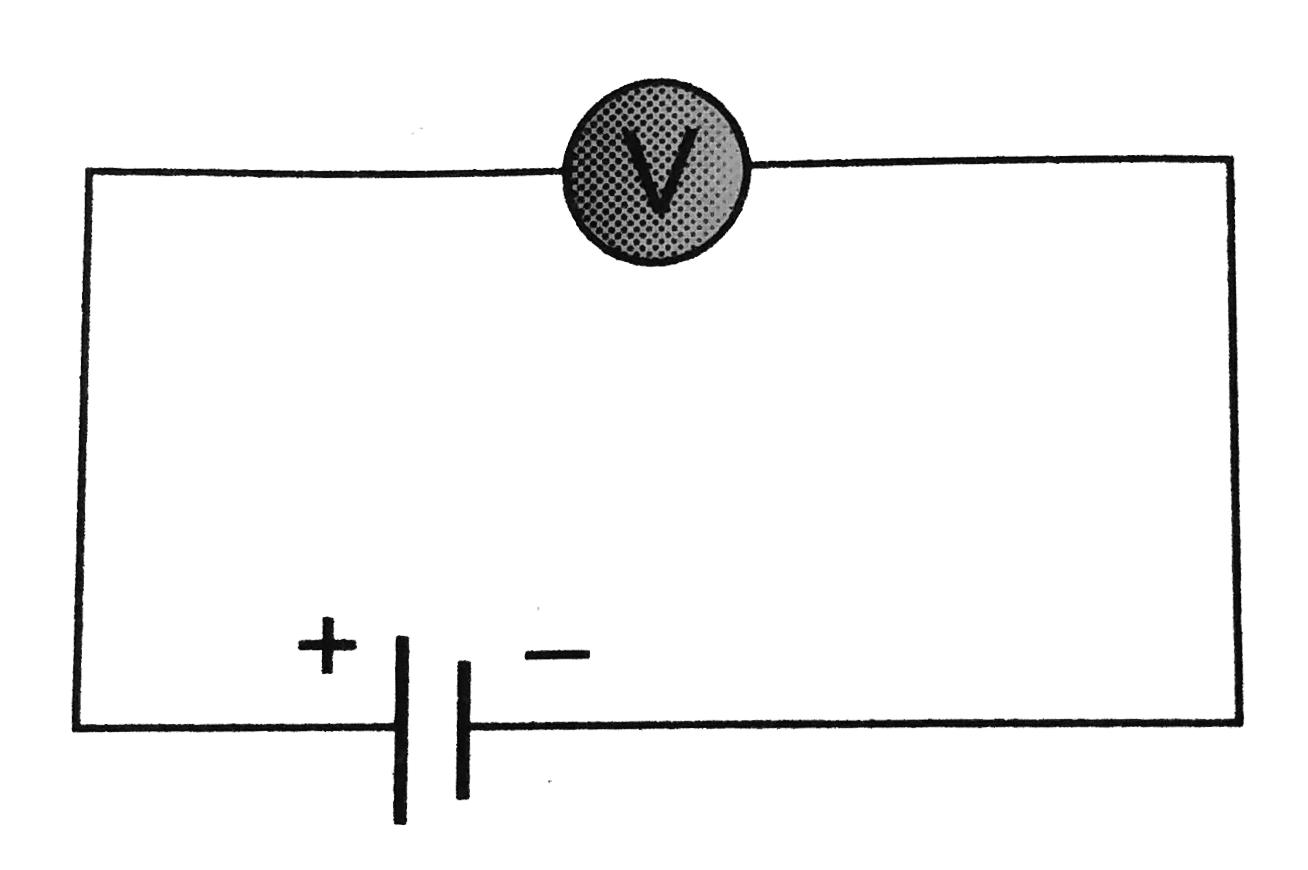A voltmeter with a resistance 50×103Ω is used to measure voltage in a circuit. To increase its range to 3 times, the additional resistance to be put in series is
9×106Ω
105Ω
1.5×105Ω
9×105Ω
The correct Answer is:B
To solve the problem of finding the additional resistance needed to increase the range of a voltmeter with a resistance of Rv=50×103Ω (or 5×104Ω) to three times its original range, we can follow these steps:
1. Understand the Initial Setup:
- The voltmeter has a resistance Rv=50×103Ω.
- It measures a voltage V across it when a current I flows through it.
2. Voltage Measurement:
- The voltage measured by the voltmeter is given by Ohm's Law:
V=I×Rv
3. Increasing the Range:
- To increase the voltage range to three times, we need the new voltage V′ to be:
V′=3V
4. Adding Series Resistance:
- When an additional resistance R0 is added in series with the voltmeter, the total resistance becomes:
Rtotal=Rv+R0
- The new voltage across the voltmeter when the same current I flows is:
V′=I×(Rv+R0)
5. Setting Up the Equation:
- Since V′=3V, we can substitute V from step 2:
I×(Rv+R0)=3(I×Rv)
6. Simplifying the Equation:
- Cancel I from both sides (assuming I≠0):
Rv+R0=3Rv
7. Rearranging for R0:
- Rearranging the equation gives:
R0=3Rv−Rv=2Rv
8. Substituting the Value of Rv:
- Now substitute Rv=5×104Ω:
R0=2×(5×104)=10×104Ω=105Ω
Final Answer:
The additional resistance R0 that needs to be put in series to increase the range of the voltmeter to three times is:
R0=105Ω
- The voltmeter has a resistance Rv=50×103Ω.
- It measures a voltage V across it when a current I flows through it.
- The voltage measured by the voltmeter is given by Ohm's Law:
V=I×Rv
- To increase the voltage range to three times, we need the new voltage V′ to be:
V′=3V
- When an additional resistance R0 is added in series with the voltmeter, the total resistance becomes:
Rtotal=Rv+R0
- The new voltage across the voltmeter when the same current I flows is:
V′=I×(Rv+R0)
- Since V′=3V, we can substitute V from step 2:
I×(Rv+R0)=3(I×Rv)
- Cancel I from both sides (assuming I≠0):
Rv+R0=3Rv
- Rearranging the equation gives:
R0=3Rv−Rv=2Rv
- Now substitute Rv=5×104Ω:
R0=2×(5×104)=10×104Ω=105Ω
The additional resistance R0 that needs to be put in series to increase the range of the voltmeter to three times is:
R0=105Ω
Similar Questions
A voltmeter with resistance 2500Ω indicates a voltage of 125V in the circuit shown in figure. What is the series resistance to be connected ot voltmeter so that it indicates 100V? Consider ideal battery.

View SolutionA voltmeter with resistance 500Ω is used to measure the emf of a cell of internal resistance 4Ω. The percentage error in the reading of the voltmeter will be
View SolutionA galvanmeter of resistance G is converted into a voltmeter of range 0 -1V by connecting resistance R1 in series with it. The additional resistance that should be connected in series with R1 to increase the range of the voltmeter to 0-2 V will be :
View SolutionThere is a voltmeter in a circuit. In order to triple its range, the resistance of how much value should be used?
View SolutionA voltmeter has resistance 2000Ω and range 5 V. For increasing its range upto 20V, a resistance of
View SolutionVoltage range of galvanometer of resistance R is 0 to 1V. When its range increases upto 2V for this the additional resistance required in series will be
View SolutionA voltmeter has a resistance G and range V. Calculate the resistance to be used in series with it to extend its range to nV.
View SolutionA voltmeter has a resistance G and range V. Calculate the resistance to be used in series with it to extend its range to nV.
View SolutionTwo resistance of 400Ω and 800Ω are connected in series with 6 volt battery of negligible internal resistance. A voltmeter of resistance 10,000Ω is used to measure the potential difference across 400Ω. The error in measurement of potential difference in volts approximatley is
View SolutionA voltmeter of resistances 400(Ω)is used to measure the potential difference across the 100(Ω)resistor in the circuit shown in figure.(a) What will be the reading of the voltmeter ?(b) What was the potential difference across 100(Ω)before the voltmeter was connected ?

View Solution
